How To Find The Device Name With Ip Address
How would yous communicate with a device when y'all don't have the IP?
Yous might be in a situation where y'all don't have the IP accost of a device in a local network, but all y'all take is records of the MAC or hardware address.
Or your calculator is unable to brandish its IP due to various reasons, and you lot are getting a "No Valid IP Address" error.
Finding the IP from a known MAC accost should exist the task of a ReverseARP awarding, the counterpart of ARP. Merely RARP is an obsolete protocol with many disadvantages, and then it was quickly replaced by other protocols like BOOTP and DHCP, which deal directly with IP addresses.
In this article, we'll show you how to find all ip addresses on a network along with device vendors using MAC addresses with different methods for free.
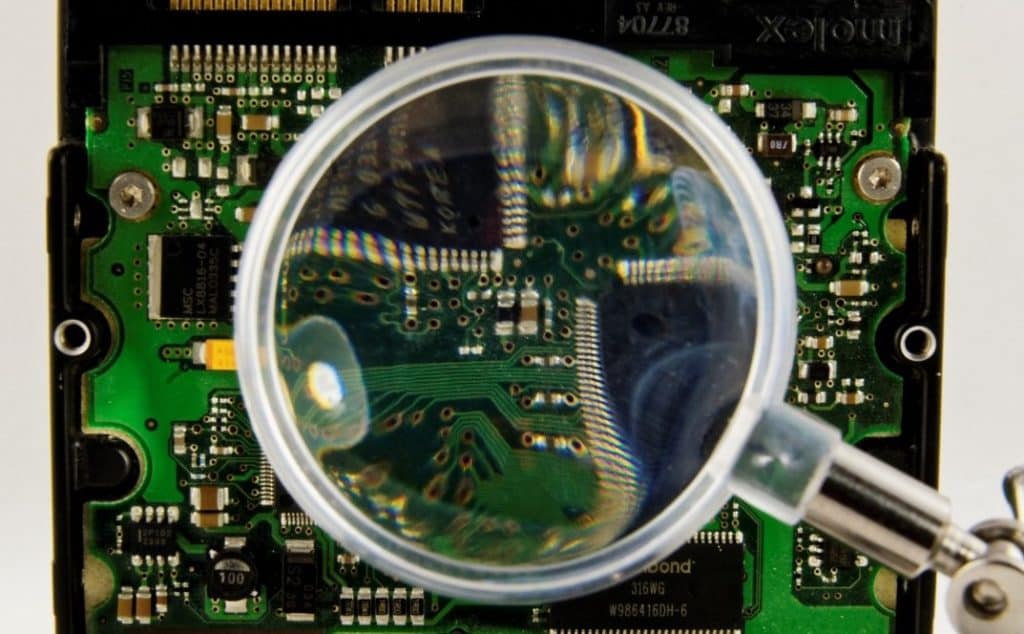
Related post: How to Scan network for IP Addresses
Understanding ARP
ARP (Address Resolution Protocol) is the protocol in charge of finding MAC addresses with IPs in local network segments.
Information technology operates with frames on the information link layer. As y'all might already know, devices in the data link layer depend on MAC addresses for their advice. Their frames encapsulate packets that contain IP address information.
A device must know the destination MAC address to communicate locally through media types like Ethernet or Wifi, in layer ii of the OSI model. Understanding how ARP works can help y'all discover IPs and MAC addresses quickly.
The post-obit message flow diagram can assist you understand the concept:
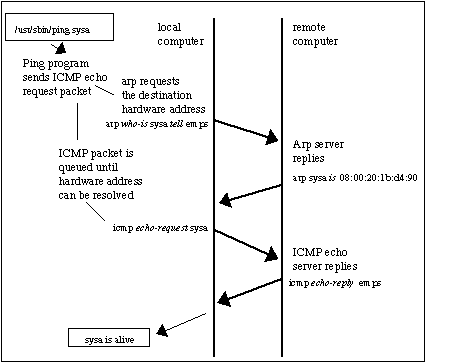
- The local calculator sends a ping (ICMP echo request) to a destination IP address (remote estimator) inside the same segment. Unfortunately, the local reckoner does not know the MAC address… information technology only knows the IP address.
- The destination hardware address is unknown, and then the ICMP echo asking is put on hold. The local computer simply knows its source/destination IP and its source MAC addresses. ARP uses ii types of messages, ARP Request and Reply.
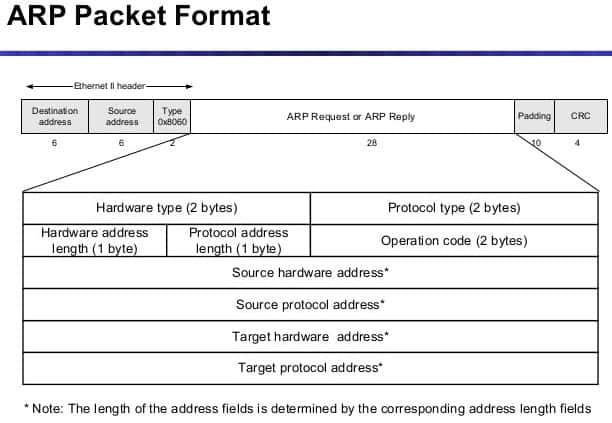
The local computer sends an ARP Asking message to discover the owner of the IP address in question.
This message is sent to all devices within the same segment or LAN through a broadcast MAC (FF:FF:FF:FF:FF:FF) equally the destination.
- Because the remote computer is part of the same network segment, it receives the broadcast bulletin sent by the local calculator. All other computers in the LAN besides receive the broadcast but they know that the destination IP is not theirs, and so they discard the bundle. Simply the remote computer with destination IP, responds to the ARP REQUEST with an ARP Respond, which contains the target MAC address.
- The local computer receives the ARP REPLY with the MAC accost. It then resumes the ICMP echo asking, and finally, the remote figurer responds with an ICMP repeat reply.
Finding IPs with ARP
You can utilize ARP to obtain an IP from a known MAC address.
Just starting time, it is important to update your local ARP table in society to get information from all devices in the network.
- Send a ping (ICMP echo reply) to the entire LAN, to get all the MAC entries on the table.
- To ping the entire LAN, yous can transport a circulate to your network.
- Open the Control Prompt in Windows or last in macOS and type.
ping 192.168.0.255
My subnet is 192.168.0.0/24 (mask of 255.255.255.0), so the circulate address is 192.168.0.255 which can be calculated or found with a "Impress Route" command in Windows or a "netstat -nr" in macOS. Or can also exist obtained with a subnet figurer that y'all can download for complimentary.
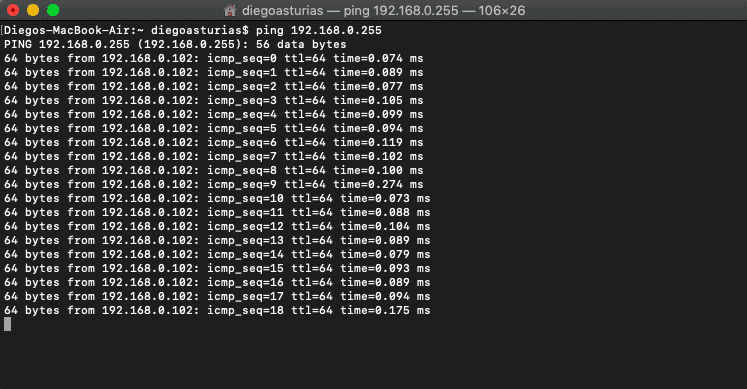
For Windows:
Step i
- Open the CMD (Command Prompt)
- Go to the "Kickoff" bill of fare and select "Run" or press [Windows-key] + [R] to open the Run application
- In the "Open" textbox type "cmd" and printing "OK".

This will open up the command-line interface in Windows.
Footstep 2
- Enter the "arp" command.
- The arp command without any additional arguments volition give you a listing of options that you can use.
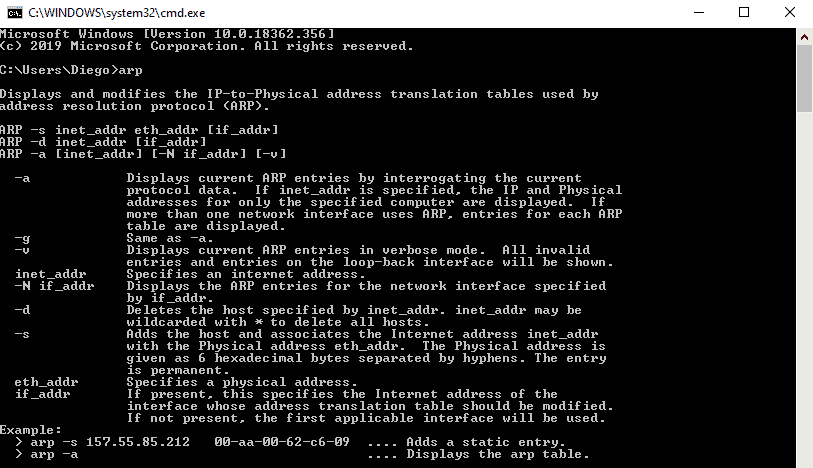
Pace 3
- Utilize the arp with additional arguments to find the IP within the same network segment.
- With the control "arp -a" you can see the ARP table and its entries recently populated by your reckoner with the broadcast ping.
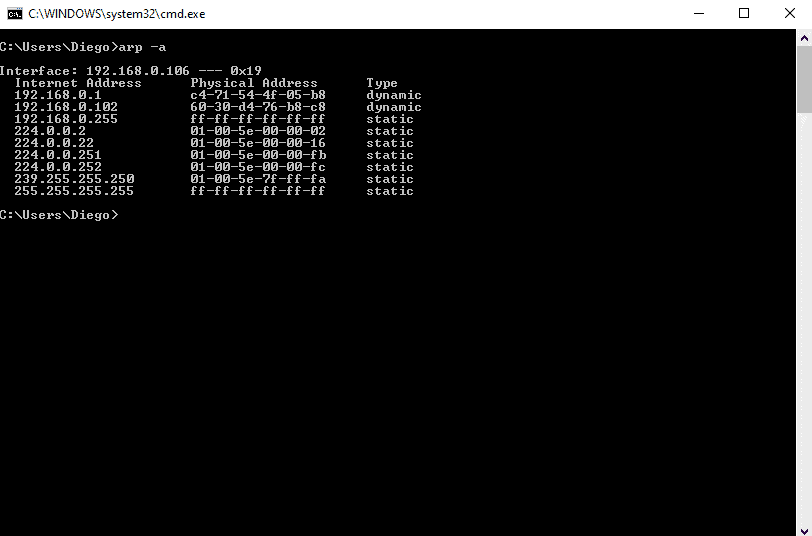
Footstep 4.
- Reading the output.
- The data displayed in the arp-a is basically the ARP table on your computer.
- Information technology shows a list with IP addresses, their corresponding physical address (or MAC), and the type of allotment (dynamic or static).
Allow'southward say yous take the MAC accost 60-30-d4-76-b8-c8 (which is a macOS device) and you want to know the IP.
From the results shown to a higher place, you can map the MAC address to the IP accost in the same line.
The IP Address is 192.168.0.102 (which is in the same network segment) belongs to 60-xxx-d4-76-b8-c8.
Yous tin can forget near those 224.0.0.10 and 239.0.0.x addresses, as they are multicast IPs.
For macOS:
Step 1
- Open the Last App. go to Applications > Utilities > Terminal or Launchpad > Other > Terminal.
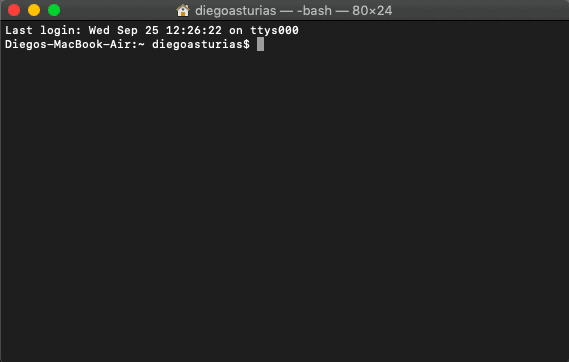
Step two
- Enter the "arp" command with an "-a" flag.
- Once you enter the control "arp -a" you'll receive a list with all ARP entries to the ARP Table in your computer.
- The output volition show a line with the IP address followed by the MAC address, the interface, and the allocation type (dynamic/static).

Finding IPs with the DHCP Server
The Dynamic Host Configuration Protocol (DHCP) is the network protocol used by TCP/IP to dynamically allocate IP addresses and other characteristics to devices in a network. The DHCP works with a client/server mode.
The DHCP server is the device in charge of assigning IP addresses in a network, and the client is usually your computer.
For dwelling house networks or LANs, the DHCP Server is typically a router or gateway.
If you accept access to the DHCP Server, you can view all relationships with IPs, MACs, interfaces, name of the device, and charter time in your LAN.
Step 1
- Log into the DHCP Server. In this example, the DHCP server is the abode gateway.
- If you don't know the IP address of your DHCP Server/ Gateway, you can run an ipconfig (in Windows) or ifconfig (in macOS/Linux)
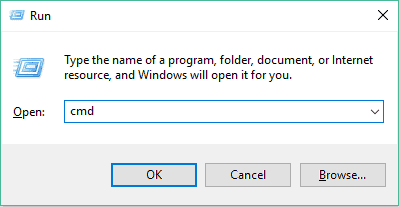
- This particular DHCP Server/Gateway has a web interface.
Step 2
- Enter the IP address on the search bar of the web browser, and input the right credentials.
Step 3
- Find the DHCP Clients List.
- In this TP-Link router, the DHCP Server functionality comes equally an additional feature.
- Go to DHCP > DHCP Clients Listing. From this listing, you can come across the mapping betwixt MAC addresses and their assigned IPs.
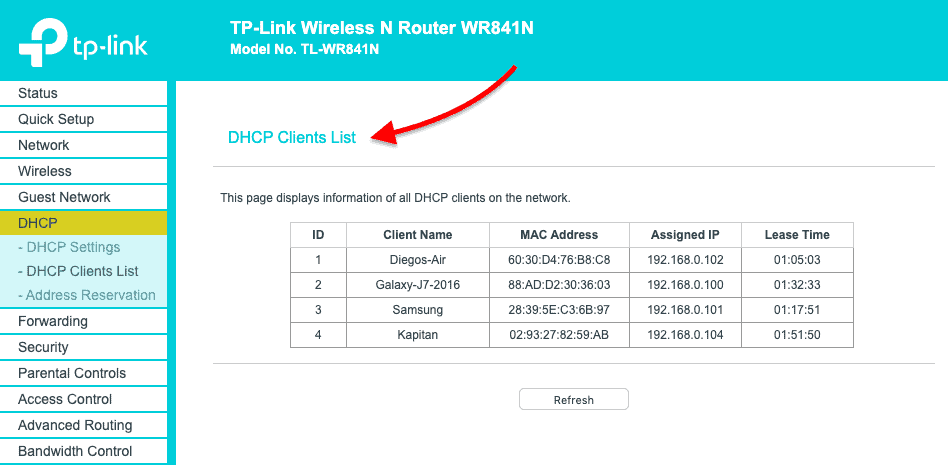
Using Sniffers – Nmap
If you couldn't discover the IP in the ARP listing or unfortunately don't have admission to the DHCP Server, as a last resort, y'all can employ a sniffer.
Packet sniffers or network analyzers similar Nmap (or Zenmap which is the GUI version) are designed for network security.
They can help identify attacks and vulnerabilities in the network.
With Nmap, you tin actively scan your entire network and find IPs, ports, protocols, MACs, etc.
If you are trying to find the IP from a known MAC with a sniffer similar Nmap, expect for the MAC address within the scan results.
How to find the Device and IP with a Sniffer?
Step 1
- Keep records of your network IP address information.
- In this example, my network IP is 192.168.0.0/24. If y'all don't know information technology, a quick "ipconfig" in Windows cmd or an "ifconfig" in macOS or Linux terminal tin can show you the local IP and mask.
- If you can't subnet, Download this Complimentary Subnet Calculator tool or go online to a subnet estimator and find your network IP.
Pace 2
- Download and open up Nmap.
- Download Nmap from this official link https://nmap.org/download.html and follow its straightforward installation process.
Step 3
- Open Nmap (or Zenmap) and use the command "sudo nmap -sn (network IP)" to scan the entire network (without port browse).
- The command will listing machines that respond to the Ping and will include their MAC accost along with the vendor.
- Don't forget the "sudo" command.
- Without it, you will not see MAC addresses.
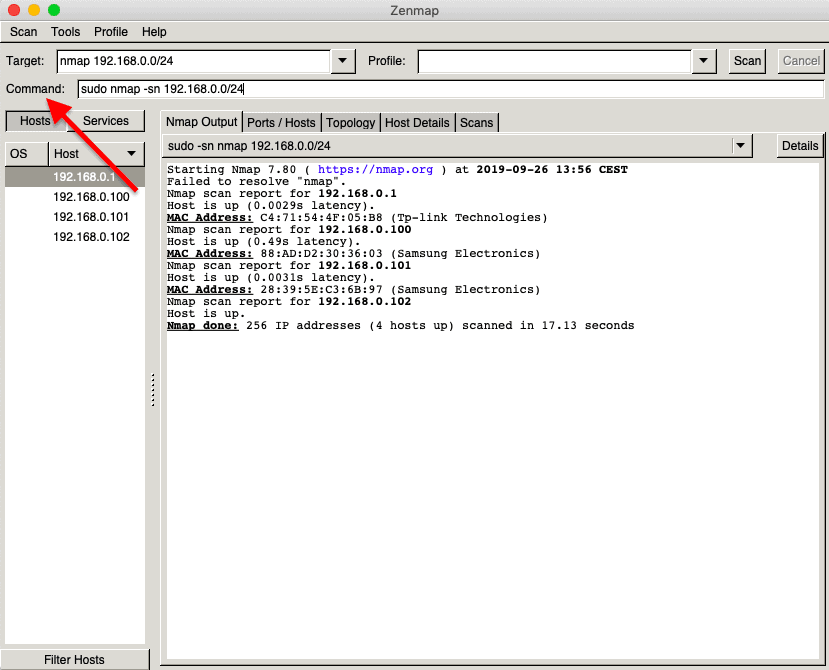
Finding out the device vendor from a MAC accost
Ok, so now y'all were able to discover out the IP address using "arp -a" command or through the DHCP Server.
But what if you want to know more details almost that item device?
What vendor is it?
Your network segment or LAN might be full of different devices, from computers, firewalls, routers, mobiles, printers, TVs, etc.
And MAC addresses contain primal data for knowing more details nigh each network device.
First, information technology is essential to understand the format of the MAC address.
Traditional MAC addresses are 48 bits represented in 12-digit hexadecimal numbers (or six octets).
The kickoff half of the half-dozen octets stand for the Organizational Unique Identifier (OUI) and the other half is the Network Interface Controller (NIC) which is unique for every device in the world.
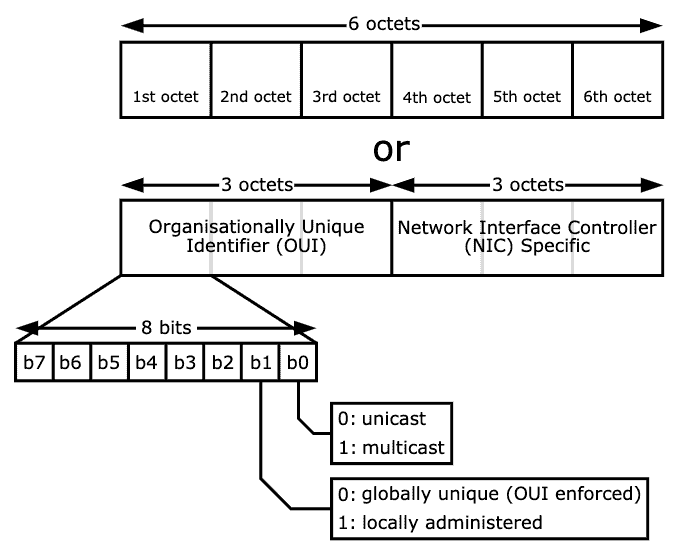
There is non much we can practice near the NIC, other than communicating with it.
But the OUI can give u.s. useful information about the vendor if you didn't utilize Nmap, which can besides give yous the hardware vendor.
Using Wireshark OUI Lookup
A gratuitous online OUI lookup tool like Wireshark OUI Lookup can help you with this.
Just enter the MAC address on the OUI search, and the tool will look at the start three octets and correlate with its manufacturing database.
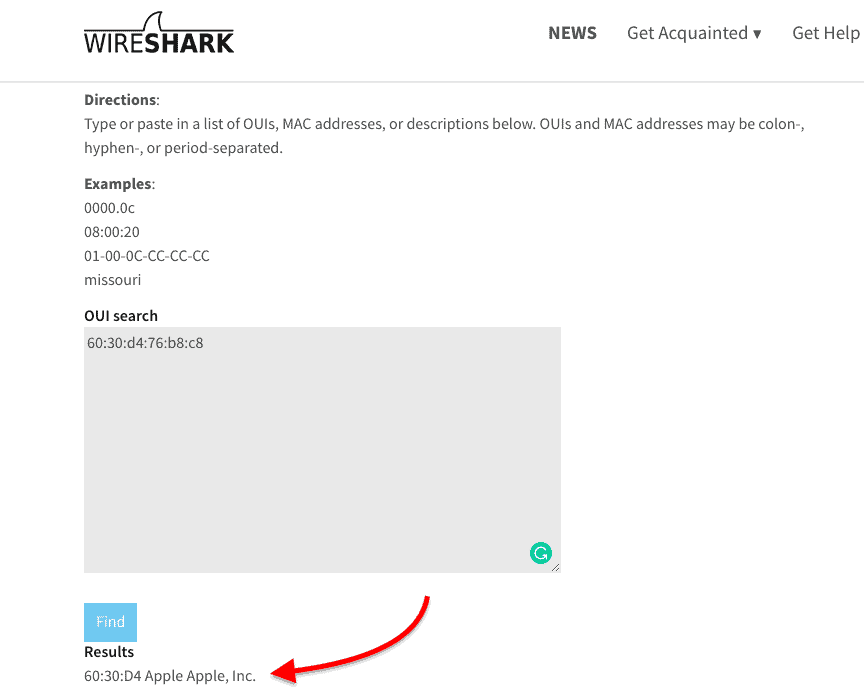
Using DHCP to view IP info
Although the RARP (the counterpart of ARP) was specifically designed to find IPs from MAC addresses, information technology was apace discontinued considering it had many drawbacks.
RARP was apace replaced by DHCP and BOOTP. Simply ARP is still ane of the core functions of the IP layer in the TCP/IP protocol stack. It finds MAC addresses from known IPs, which is most common in today's communications. ARP works under the hood to keep a ofttimes used list of MACs and IPs.
Only you tin too utilise it to come across the current mappings with the command arp -a.
Aside from ARP, you can as well use DHCP to view IP information. DHCP Servers are usually in accuse of IP assignments. If you have access to the DHCP server, go into the DHCP Client list and identify the IP with the MAC address. Finally, you lot can use a network sniffer like Nmap, scan your unabridged network, and find IPs, and MACs.
If you simply want to know the vendor, an online OUI lookup like Wireshark can help you find information technology chop-chop.
Find a Device or IP Accost FAQs
Can you observe an IP address from a MAC address?
Yep. Open a Command Prompt window and enter the command arp -a. The output shows all of the IP addresses that are active on your network. The next column in the output is headed Physical Address. This is the MAC address. Look for the line in the output that has the MAC address that you know and annotation down the IP address on that line.
How can I access a device past MAC address?
The easiest way to access a device, knowing the MAC address is to use the arp -a command to find the related IP address. With this address, yous can access the device using Remote Desktop Management, a Telnet program, or some other connection facility.
How can I find a device past IP address? (cmd instructions)
You tin can follow a path to a device if you lot know its IP address by using the tracert command at the command prompt (cmd). Open a Command Prompt window and type in tracert followed by the IP address that you lot know. The output will show each router that has a connectedness to that device will pass through.
Source: https://www.pcwdld.com/find-device-or-ip-address-using-mac-address
Posted by: ryanlesse1976.blogspot.com


0 Response to "How To Find The Device Name With Ip Address"
Post a Comment